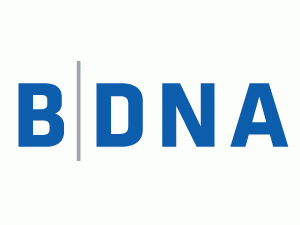BDNA is one of 70 companies chosen by VentureBeat to launch at the DEMO Fall 2010 event taking place this week in Silicon Valley. After our selection, the companies pay a fee to present. Our coverage of them remains objective.
 Today at the DEMO conference, BDNA is launching tools for corporations to streamline and optimize their IT infrastructure.
Today at the DEMO conference, BDNA is launching tools for corporations to streamline and optimize their IT infrastructure.
The company compares this to mapping an IT genome, where genes are all the various IT products, hardware and software, available in the market. A sequence might be all the antivirus software or hardware from a particular vendor used within the corporation.
At the conference, BDNA will demonstrate how its technology cleans and enriches IT data taken from an 18,000-employee installation where the original asset discovery report — an older, less automated way to map IT infrastructure — ran to 14 million lines.
AI Weekly
The must-read newsletter for AI and Big Data industry written by Khari Johnson, Kyle Wiggers, and Seth Colaner.
Included with VentureBeat Insider and VentureBeat VIP memberships.
Simplifying IT asset discovery is a lucrative field of investment. VMware, the large virtualization-software company, recently acquired Southern Californian startup Integrien for $100 million.
At the core of the BDNA process is Technopedia, a database of information on every major software and hardware product, including versions, support dates, energy efficiency, and other relevant data. Technopedia contains information on over 10,000 vendors and 80,000 products. The first step for a corporation using BDNA is to discover all the IT assets being used across multiple company sites and functions.
Then, using Technopedia, the data is filtered and redundant information is eliminated. For example, many discovery tools cannot tell that Macromedia Flash and Adobe Flash are the same product, or distinguish between different language versions of the same software. Each product in Technopedia has a unique signature which is matched with a discovered product and used to eliminate such redundancies. BDNA also adds useful data to the signature such as energy consumption profiles, patch and update histories, product recalls, end-of-life policies, service bulletins, and so on.
Once the corporate user has an overview of all its assets, BDNA’s tools are used to answer queries: How many expensive Adobe Creative Suite 5 licenses do we have and how many are actually being used? What servers are running at less than 20% capacity and could be consolidated or virtualized? What is migrating to Windows 7 going to cost us?
The State of California recently used BDNA to reduce the carbon footprint of its tech infrastructure. BDNA identified the state’s servers and PCs and matched them with energy consumption information in Technopedia. From there, administrators examined the potential impact of various energy-consumption policies, from consolidating assets to turning off PCs when not in use. They also identified systems that shouldn’t be interfered with as they are needed to run 24 hours a day. BDNA claims that the state should reduce carbon emissions by 200,000 tons a year based on the data it derived.
BDNA was founded in 2000 in Silicon Valley, has 130 employees and has received four rounds of funding from a variety of sources including Newbury Ventures, Crescendo Ventures, Motorola, and vSpring Capital.
http://c.brightcove.com/services/viewer/federated_f8/980795693
VentureBeat's mission is to be a digital town square for technical decision-makers to gain knowledge about transformative enterprise technology and transact. Learn More